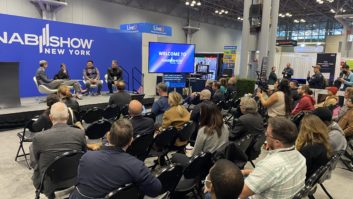NAB says many RF modulators on the consumer market are not only overriding terrestrial signals, but have the potential to interfere with HD Radio signals as well.
In letters sent to the FCC and Senate Commerce Committee leadership, the trade group urges the commission to undertake “swift action” to solve this problem and “vigorously enforce” its Part 15 rules.
NAB had an engineering firm in Waldorf, Md. – Meintel, Sgrignoli & Wallace – test 17 FM modulated devices in light of recent complaints by listeners who say their terrestrial car radios are being interfered with by the devices.
“Thirteen of the 17 wireless devices (76%) were found to exceed the 48 dBuV/m limits of Part 15 operation. One device transmitted a signal that was 20,000 percent stronger than allowed by FCC rules. Six devices were found to exceed the FCC field strength limit by more than 2,000 percent,” states NAB in the letter to FCC Chairman Kevin Martin and Senate Commerce Committee Chairman Ted Stevens and Co-Chair Daniel Inouye.
In addition NAB states: “Many devices transmitted signals that were substantially wider in bandwidth than the 200 kHz-wide FM channel, resulting in potential interference not only to the signal in the channel to which the Part 15 device is tuned but to 1st- and 2nd-adjacent channel signals as well.”
The association says it also believes many of the modulators in the marketplace could interfere with new digital radios as well.
NAB said because the modulation capabilities of the devices allow them to occupy more than one FM channel simultaneously and because the strong field strengths emitted by some of these devices will exceed the co-channel and adjacent channel interference ratios (D/U ratios) at which consumer radios operate, “use of these devices can wipe out reception of both analog signals and the new digital signals.”
“This is problematic for consumers’ use of radio in any event, but it is particularly troublesome with regard to current deployment of new digital signals that consumers are just beginning to experience.”
Most of the devices tested were not satellite radio RF modulators, but rather, MP3 or iPod-like devices.
Part 15 Debate: NAB Says 13 of 17 Devices Exceeded Field Strength Limits
Part 15 Debate: NAB Says 13 of 17 Devices Exceeded Field Strength Limits











